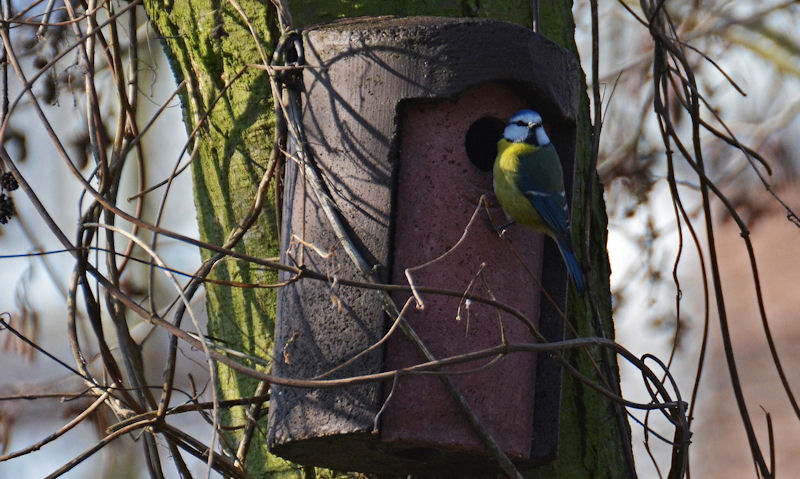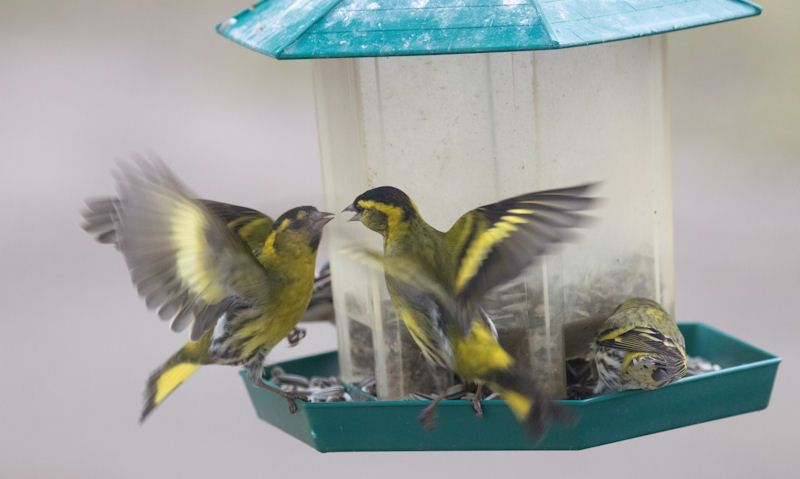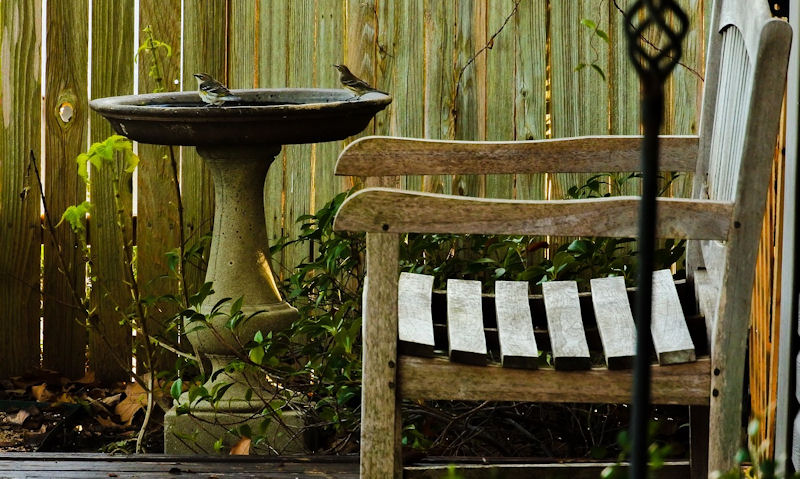RSPB bird box hole sizes
RSPB's supply of garden bird nest boxes cater to only the most common wild birds in the UK, limiting their range to only twenty-one nest boxes.
RSPB offer up to 7 bird boxes with a 32mm hole, which can cater to Nuthatches to wild birds who use a small bird box hole size. Reason to this is to encourage as many birds to nest, as its possible for birds to nest in a wrong size hole bird box. Thereafter, bird boxes are specifically designed for certain species.
Normally we can rely on a wild bird charity such as the RSPB to be more specific when offering a series of bird boxes for small birds, but they haven't.
However, that is not a bad thing because the organisation is looking to save you the trouble by using a single bird box hole size, to cater to as many bird species as possible.
Its therefore possible to see all the Tit family, Sparrows or Nuthatches nest in your bird box, if positioning the bird box in a more natural location for them.
To be a 32mm bird box hole size, you should not experience any issues with any species of wild birds nesting - in fact you could see birds who prefer smaller hole sizes or those that prefer them much larger use an incorrect hole size.
Hole sizing is not so much an issue when catering to Robins as they don't mind any old bird box with an open front - or Wrens for that matter.
To cater to House Martins or Sparrows though is a little more difficult as they prefer a cup nest made in resin.
While House Martins prefer a oval shaped entrance hole; Swallows don't use a hole to enter their specialty Swallow nest box, but instead go through a tight gap on top.
RSPB bird box hole size table
| Product Name: | Item No.: | Shape: | Hole Size: |
|---|---|---|---|
| Swift nest box | R421069 | Rectangle | 28 x 65mm |
| Silhouette Classic Apex Nest Box | R407811 | Rounded | 32mm |
| Beach Hut Nest Box, Yellow | R421119 | Rounded | 32mm |
| Beach Hut Nest Box, Blue | R421121 | Rounded | 32mm |
| Beach Hut Nest Box, White | R421120 | Rounded | 32mm |
| Apex Classic Nestbox | R0107 | Rounded | 32mm |
| Apex Open-Front Nest Box | R1073 | Square | 28 x 28mm |
| Classic Nest Box | R401639 | Rounded | 32mm |
| Lodge Nest Box Open-Front | R421045 | Triangle | 150mm |
| Sparrow Terrace Nest Box | R407816 | Rounded | 32mm |
| Robin or Wren Diamond Nestbox | R401640 | Triangle | 150mm |
| Robin Brushwood Nest | R421077 | Rounded | 150mm |
| Swallows Nest Cup | R408695 | Open Cup | 120 x 130mm |
| House Martin Nest Cup | R408694 | Half-Oval | 45mm |
| Apex Starling Nestbox | R405836 | Rounded | 45mm |
Up to fifteen bird boxes the RSPB have made available to you, when excluding duplicates or special offer type deals.
All but two of these RSPB bird boxes are developed with a hole size that caters to certain wild birds - with correct hole sizes listed in the hole size column.
Don't assume all bird box holes are rounded, as the shape can vary from square, triangle to rectangular - either by a design only or practical purposes.
Use the product name to jump over to the RSPB's own web site to view the range, while the item number is listed in case you need to search for it yourself.
32mm to attract as many species
In an effort to attract as many wild birds to nest in your garden as possible, without the need of more bird houses - the RSPB have considered this issue in advanced.
Rather than offering a bird box hole size in a small 25mm to cater to Blue or Coal Tits - or a little larger 28mm entrance hole size for Great Tits or House Sparrows - the RSPB have set their bird box range to mostly 32mm.
You may be wondering why a 32mm would be set for wild bird species who prefer to nest in a bird box with a larger or smaller whole - well its actually not a problem.
It is possible to see Tits nest in a bird box using a much larger hole size then what is often recommended to you.
After all, Tits do actually resize their bird box hole to something a little more larger by chipping around the edges. Its also worth noting you can prevent the bird box hole being altered by nesting birds or predators with use of a bird box entrance hole plate.
In 32mm, the RSPB have opened up the possibility of attracting more wild bird species to use your nest - then if it one was built with the smallest hole size setting available.
You may also see birds who use a bird box far larger than a 32mm hole, use this box.
Shape can change hole size
In reference to my RSPB bird box hole size table chart above, notice in the shape column lists bird box hole sizes cut into different shapes.
Now its fair to say those cut into a triangle or square can be for show only, while the more rounded options are for practicality uses.
Likewise, the much larger square or rectangle bird box hole shapes serve to cater for less common - harder to nest in a bird box wild bird species.
Shape of the bird box hole can of course effect the size of the hole.
In many cases that doesn't matter at all as birds will happily move in to a bird box if its structurally sound.
But to be too big or too small due to the re-shaping, can stop the harder to nest birds, in case of the Woodpeckers or Starlings from settling in the box.
More unique is the RSPB Swift bird box hole size that is more a wide rectangle shape which is commonly cut into the corner - but in turn corresponds to a longer wooden box.
Robins or Wren open-front
Bird box hole sizes don't matter much to the open-front bird nesters as they prefer a large opening, as it replicates those naturally made in nature.
RSPB still apply this technique in their bird box range by offering up Robins or Wren's an open front bird box design.
Its then not so much an issue with the hole size as it can vary from one box to the next.
But as a rule of thumb a Robin nest box hole size would be up to 150mm tall, as width would be within this margin - give or take several millimetres.
Its therefore safe to say a Robins bird box doesn't really need a specific hole size, just a big open front.
However, its not just Robins or Wrens that require a certain bird box hole size, but so do Swallows and House Martins, with a difference.
Swallow or House Martin cups
Swallows or House Martins don't make use of a wooden bird box in the traditional sense, but reply more on a crafted box that is more oval, or made to appear like a cup.
Swallows in particular prefer a cup nester that is made in a resin to be shaped into a bowl - access to this bowl is through a narrow open gap on top that would otherwise be elevated to the underside of a roof.
The RSPB then have made this cup with no entrance hole with a 120mm by 130mm open top cup, with little depth at all.
House Martins do in fact use this same resin built half cup to nest in, but with a little difference.
Martins require a bird box hole size that is approximately 45mm, which the RSPB have cut into the cup in a half hole rather than a full rounded one.
RSPB bird box hole size summary
Most common RSPB bird box hole sizes are 32mm, and while a smaller size would cater more to Tits, the charity would tell you this doesn't matter so much.
You see, wild birds of all species won't mind nesting in a wooden bird box using a hole size that they don't normally take too - in case of desperate times - its easy to see birds take to a bird box when they can, within reason.
Its therefore safe to say a single bird box using a 32mm hole can cater to all Tits, Nuthatches and Sparrows.
RSPB have built their bird boxes for Robins or Wren's with a large hole, with a 150mm tall open front.
On the otherhand, to cater to Swallows or House Martins with the correct hole size is a little more trickier - seeing as they don't use holes the traditional way.
Instead these birds use a cup to nest in with a tight squeeze to access it for Swallows, or a half-oval shaped entrance hole for House Martins, measuring about 45mm.


